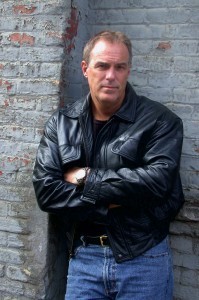Teaching Point: Rules vs. Principles on Characterization
I was lucky enough to chat it up with Larry Brooks this week, the author of the book I've been raving about all year: Story Engineering. Larry, in this book, has helped me clarify many issues of confusion around my own novel writing process. One of them is on characterization. Here is a lovely excerpt of our conversation:
JL Q: I read 1st dimension characterization happens in the 1st part, especially for hero and those closest to him/her and 2nd/3rd dimension enters the story during parts 2 & 3. I also read of limiting backstory to 10% (overall) and just hinting at backstory prior to the first plot point. Are these two rules hard and fast?
 Larry Brooks LB A: I used to be hard nosed about this kind of stuff, and have been criticized (body slammed) for a monocular view on the writing process. That criticism has both widened and softened my view, without the slightest dilution of my belief in the "principles" that make a story effective. That's the key shift for me... to abandon the notion of "rules" and lean into "principles." Which is where my response to your question goes.
Larry Brooks LB A: I used to be hard nosed about this kind of stuff, and have been criticized (body slammed) for a monocular view on the writing process. That criticism has both widened and softened my view, without the slightest dilution of my belief in the "principles" that make a story effective. That's the key shift for me... to abandon the notion of "rules" and lean into "principles." Which is where my response to your question goes.
What you observe about Part 1 in your question is a strong one, we meet our characters as THEY want the world to see them, and through our narrative we peel back that often contrived, sometimes defensive, sometimes strategic skin to reveal the inner character, explained in part by a back-story we also cleverly layer into the narrative. Everything you said about this model is accurate. Falls short of being a rule, though, as the precise degree and placement of these things is always an author's call. It's like dancing... to do it well we need to stay in step with the music, but the time and placement of us flapping our arms... that's art. So it is with characterization, I think. So many options. These principles keep us sane, because they give us a touchstone and a target, yet allow us to apply our unique sensibilities to the lives we bring to our pages. If exposing second and third dimension stuff in Part 1 serves you -- and I can see how it can happen, and effectively -- then trust your gut.
JL SUMMARY: This response from the generous Mr. Brooks helped me clarify my own process. But try it out yourself, experiment.
JL Q: I read 1st dimension characterization happens in the 1st part, especially for hero and those closest to him/her and 2nd/3rd dimension enters the story during parts 2 & 3. I also read of limiting backstory to 10% (overall) and just hinting at backstory prior to the first plot point. Are these two rules hard and fast?
 Larry Brooks LB A: I used to be hard nosed about this kind of stuff, and have been criticized (body slammed) for a monocular view on the writing process. That criticism has both widened and softened my view, without the slightest dilution of my belief in the "principles" that make a story effective. That's the key shift for me... to abandon the notion of "rules" and lean into "principles." Which is where my response to your question goes.
Larry Brooks LB A: I used to be hard nosed about this kind of stuff, and have been criticized (body slammed) for a monocular view on the writing process. That criticism has both widened and softened my view, without the slightest dilution of my belief in the "principles" that make a story effective. That's the key shift for me... to abandon the notion of "rules" and lean into "principles." Which is where my response to your question goes. What you observe about Part 1 in your question is a strong one, we meet our characters as THEY want the world to see them, and through our narrative we peel back that often contrived, sometimes defensive, sometimes strategic skin to reveal the inner character, explained in part by a back-story we also cleverly layer into the narrative. Everything you said about this model is accurate. Falls short of being a rule, though, as the precise degree and placement of these things is always an author's call. It's like dancing... to do it well we need to stay in step with the music, but the time and placement of us flapping our arms... that's art. So it is with characterization, I think. So many options. These principles keep us sane, because they give us a touchstone and a target, yet allow us to apply our unique sensibilities to the lives we bring to our pages. If exposing second and third dimension stuff in Part 1 serves you -- and I can see how it can happen, and effectively -- then trust your gut.
JL SUMMARY: This response from the generous Mr. Brooks helped me clarify my own process. But try it out yourself, experiment.
Published on February 22, 2013 09:25
No comments have been added yet.



